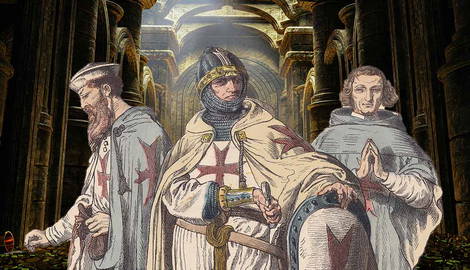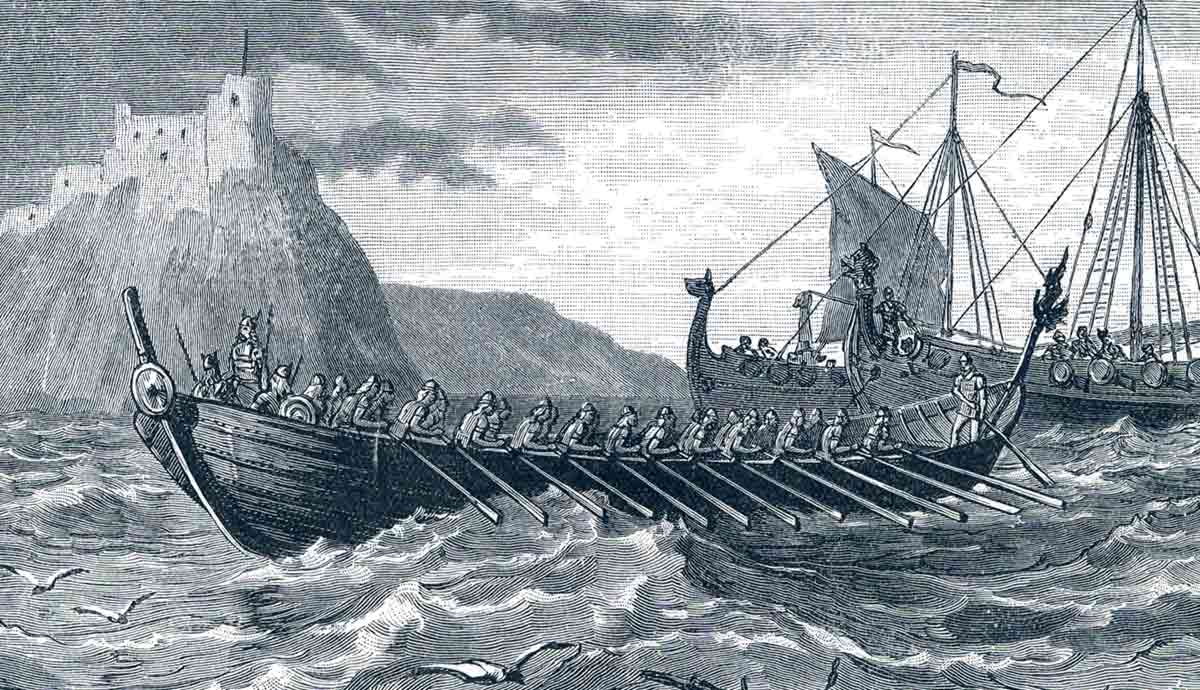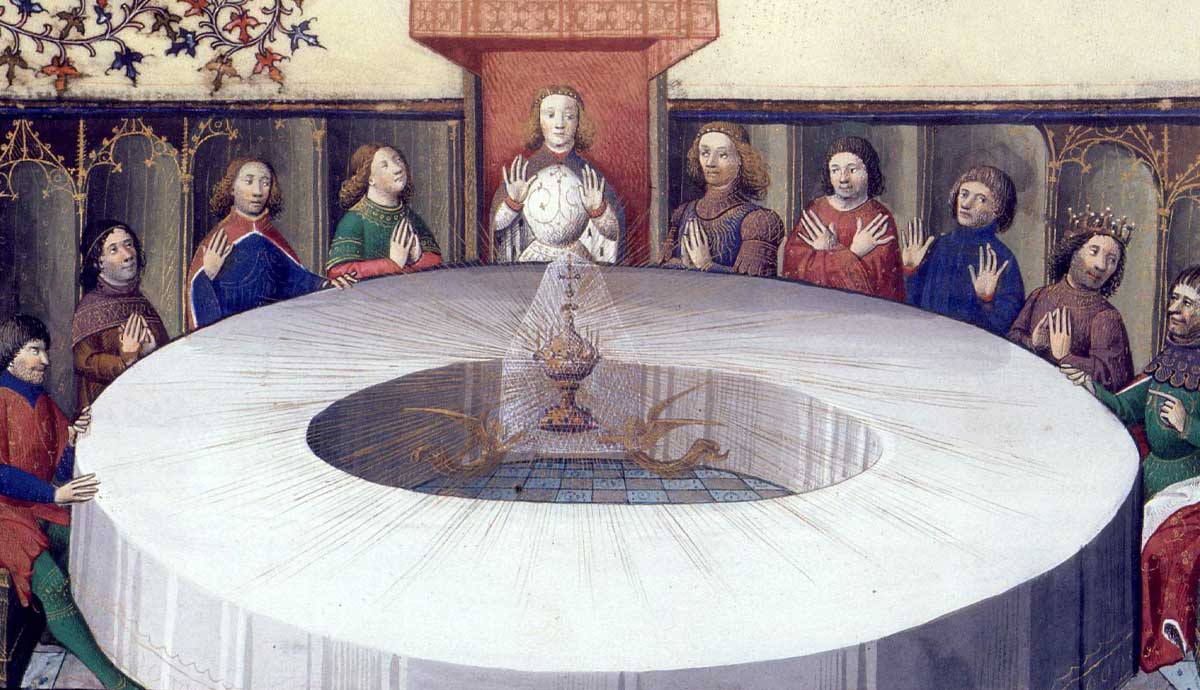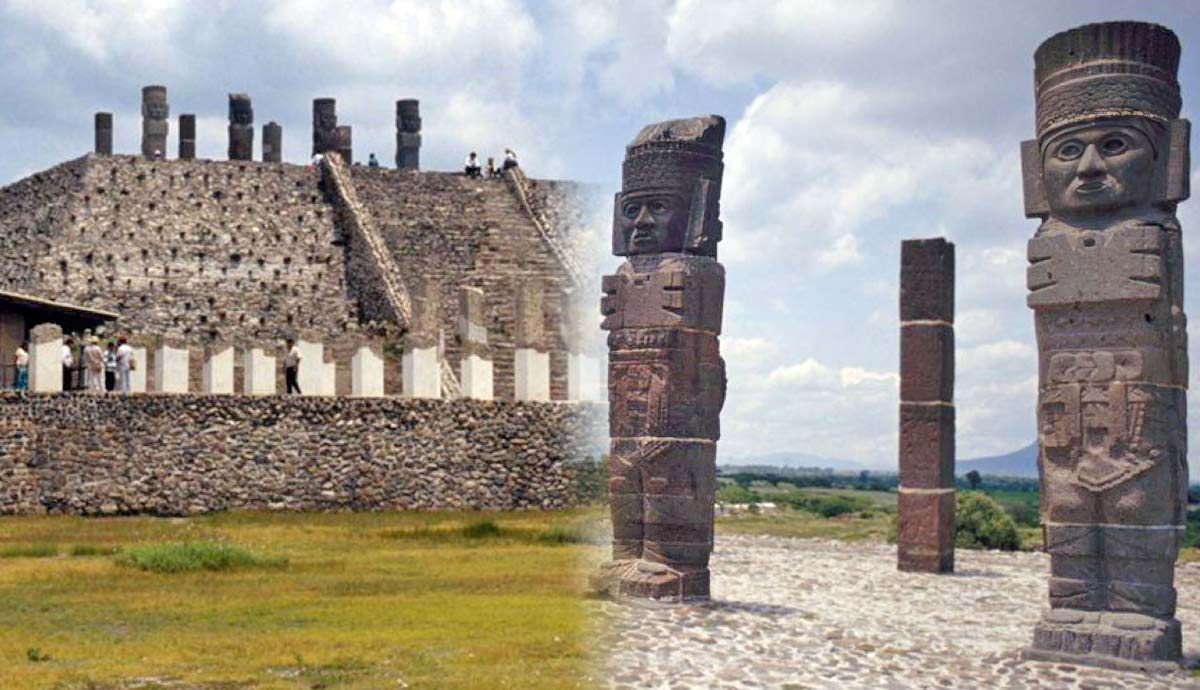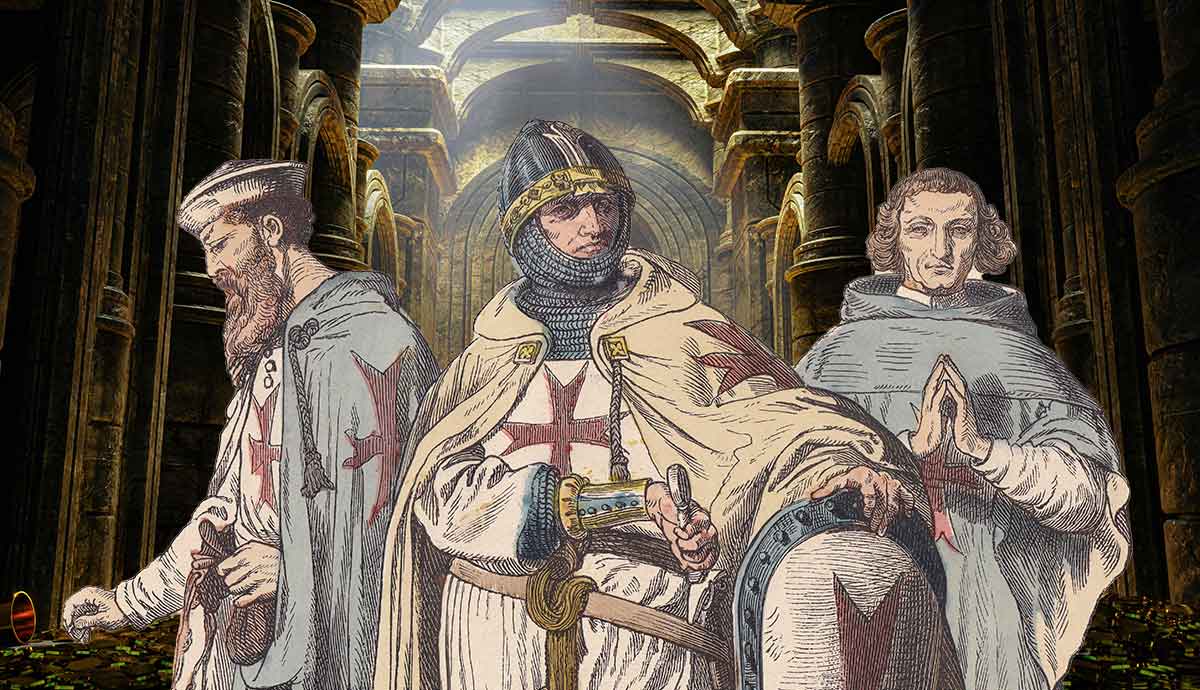
Of all the knightly orders born of the Crusades, none are as well known or as heavily mythologized as the Knights Templar. From Dan Brown conspiracy thriller novels like The Da Vinci Code to the best-selling Assassin’s Creed video game franchise, the Knights Templar have long been a mainstay of pop culture and historical fiction. Yet behind the fame and the famous red crosses lay a sprawling international organization, which was centuries ahead of its time in its logistical and financial innovations, particularly a system of deposit and credit that would lay the foundation for modern banking systems.
The Poor Fellow-Soldiers of Christ & the Knights Templar

The Knights Templar are perhaps the most well-known order of European knights in history, setting aside the fictional Knights of the Round Table. Indeed, their fame is such that when we envision the prototypical medieval knight, a heavily armored warrior with large red crosses emblazoned upon his chest and shield, we are in fact recalling the famous and instantly recognizable livery of the Knights Templar.
Founded in the early 12th century following the successful capture of Jerusalem by European Christian armies in the First Crusade, the Knights Templar were originally an order of warrior-monks dedicated to the defense of Christian pilgrims in the Holy Land. Despite the relative safety for travelers in the lands surrounding Jerusalem itself, protected as it was by the Christian armies of the four Crusader States (Antioch, Edessa, Tripoli, and of course, Jerusalem) the long journey from Europe to the Holy Land was fraught with peril.
The route which Christian pilgrims might take through North Africa was perilous due to the warring between the declining Fatimid Caliphate of Egypt and the Seljuk Turks, who had claimed lordship over much of the Middle East. The route through Eastern Europe and Central Asia was perilous due to Turkish forces encroaching upon the lands of the withering Byzantine Empire, the last stronghold of Christianity in the East. Outside these conflict zones lay scores of other perils, including marauding bandits and wild animals. The often harsh climate of the region made travel to the Holy Land a decidedly dangerous prospect.

Thus, in the early years of the 12th century, two Frankish knights, Hugues de Payens and Godfrey de Saint-Omer, approached King Baldwin II of Jerusalem with an ambitious proposal. The knights put forth the idea of a new military order, bound to the strict tenets of a monastic religious community and sworn to oaths of personal poverty, but with the purpose of safeguarding Christian pilgrims en route to the Holy Land by strength of arms. King Baldwin and Patriarch Warmund, the head of Jerusalem’s Latin Christian church, approved of the proposal. Indeed, so fervently did King Baldwin support the idea that he granted the knights a palace converted from the al-Aqsa Mosque on the southern end of the Temple Mount in Jerusalem, believed to be the site of the ancient Temple of Solomon.
Thus, on Christmas Day of 1119, Hugues, Godfrey, and seven compatriot knights swore oaths of poverty, chastity, and obedience before the Patriarch of Jerusalem, and their order was officially christened the Poor Fellow Soldiers of Jesus Christ and the Temple of Solomon. They would come to be more widely known as the Knights of the Temple, or simply the Knights Templar.
The New Knighthood

Despite lifelong oaths of personal poverty, the Knights Templar would grow to become one of the wealthiest and most influential organizations in medieval Europe. Almost immediately the order began to accumulate land, wealth, and important legal privileges. From the Spanish kingdom of Aragon to the realms of England, Scotland, and France, the monarchs and lords of western Europe lavished donations of land, castles, arms, horses, and coin upon the Templars, as well as granting generous tax privileges to the nascent order.
In 1129, the order was granted an even greater privilege. That year, the Council of Troyes was convened in France, headed by the Papal Legate Matthew of Albano, a personal representative of Pope Honorius II. By the time the council concluded, the Templars had been granted official recognition by the Pope, securing the order’s place in the Church and dramatically increasing their stature and popularity among the lords of western Europe. Further gifts of land and gold were lavished upon the order, swelling their coffers. Meanwhile, their heroic, chivalric image began to attract members of the European nobility to their ranks.
Even greater papal sanction would follow 10 years later. In 1139, Pope Innocent II issued the Papal bull Omne Datum Optimum, establishing the Templars as an independent order within the Catholic Church. With this declaration, the Templars were made answerable only to the Pope himself, establishing them as one of the most powerful religious orders in Christendom. Moreover, the order was made exempt from all tithes and taxes, given the right to build their own churches and cemeteries, and allowed all but complete autonomy, even over religious matters, within their own lands and holdings.
Oaths of Poverty, Networks of Wealth

By the second half of the 12th century, the Knights Templar were practically a state unto themselves. Holding lands, castles, and fortresses from England to Jerusalem, the Grand Master of the Knights Templar oversaw a vast international enterprise with the authority to levy and collect its own taxes, hold markets, and collect profits from agricultural lands they controlled. The order even owned its own fleet of ships, which the Templars used to trade internationally in goods such as olive oil and wool, making the order a direct competitor to the powerful Italian merchant cities of Venice and Genoa.
Their vast network of strongholds stretching from western Europe to the Holy Land meant that Christian pilgrims traveling from Europe could be assured of protection at major checkpoints along the route to Jerusalem. Moreover, the Templars’ network of fortresses and commitment to safeguarding pilgrims gave rise to perhaps the most unique and consequential innovation associated with the order: a system of secure deposit and internationally recognized credit that would lay the foundation for modern banking.
Long distance pilgrimages were not only dangerous, but also expensive. In addition to food and supplies for the journey, pilgrims would need money for lodgings and provisions once they reached their destination. In an age where money was counted in hard coinage, carrying one’s funds on one’s person over vast distances was a dangerous prospect.

Thus, to aid in the safety and security of Christian pilgrims, the Templars established a system of deposit and credit which would see them become, in effect, Europe’s first international banking agency. Pilgrims could deposit their money or goods at any Templar stronghold and would in turn receive a letter of credit for the deposited amount. This letter of credit could be redeemed at any other Templar stronghold. Thus, a pilgrim could deposit their savings at a Templar house in France and withdraw it from a Templar house in Jerusalem.
This system was not only revolutionary in medieval Europe, but also exceedingly secure. Overseeing a vast network of international property required meticulous record keeping, a logistical challenge at which the Templars excelled. At every Templar-owned property, daily records were kept of all transactions, withdrawals, purchases, and deposits, along with the names of the parties, the Templar cashier who oversaw the transaction, and the dates involved. Copies of these records were then transferred to a secure central archive, allowing the Templars to keep a vast, comprehensive record of every transaction made within their growing financial network.

From personal deposit and credit, the Templars soon expanded into finance and loans. Crusading and warmaking were expensive undertakings, even for kings, and the Templars were only too ready to make funds available for war in the name of Christ. When the Templars made a large loan to King Louis VII of France to finance his ill-fated expedition in the Second Crusade, it was the beginning of what would become a longstanding relationship between the order and the monarchs of Europe. It would see the Templars not only making large loans to Christian monarchs but also brokering land sales and guaranteeing loans from other sources. King John of England, infamous as the wicked king of Robin Hood tales, borrowed heavily from the Templars during his turbulent reign.
The Fall of the Templars

The Knights Templar had never been without controversy. From the beginning of their order, some throughout Christendom viewed them as problematic or even heretical. A pious religious order dedicated to military aims and violence seemed paradoxical to many, and the rapidly growing networks of wealth commanded by an order supposedly sworn to poverty raised suspicion, distrust, and outright hostility from others.
As Christian efforts in the Holy Land continually suffered setbacks, defeats, and losses of land in the later years of the Crusades, many powerful European leaders began looking for scapegoats for the faltering campaigns. The Knights Templar, a vast international network holding great wealth, naturally became an easy target for blame.
King Philip IV of France was one such antagonist. An innovative civil reformer, Philip sought to consolidate power in France under the throne, breaking the power of the feudal nobility and centralizing authority, a process that would lead to the breakdown of the medieval social order and the growth of the modern state. Philip saw the Knights Templar, with their independent power base, near total autonomy, and vast financial resources, as a roadblock to the growth of the centralized state he envisioned. He was also heavily indebted to the order.

Relying on allegations of heresy and impropriety levied by former Templars who had been expelled from the order, Philip began an aggressive campaign to arrest the Templars in France and seize their property. With powerful Papal backing, the Knights Templar were not subject to the rule of kings, but if they were to be seen as heretics and sodomites (another allegation levied against the order), Philiip believed he could undermine their legal and spiritual standing.
By Philip’s order, mass arrests of Templars and seizure of their property began. Over 15,000 Templars in France were arrested in a single day, and the Inquisition in France was tasked with confirming their heresy and impropriety. Through torture and intensive questioning even the Grand Master of the order, Jacques de Molay, was made to confess to charges of heresy and the denial of Jesus Christ. The forcefully extracted confessions of other high-ranking Templars soon followed.

With damning confessions in hand, Philip was able to secure official condemnation of the order from Pope Clement V, all but dooming the Templars to extinction. In 1307, Clement issued the Papal bull Pastoralis praeeminentiae, ordering all Christian monarchs to arrest any Templars within their lands. This was followed by a second Papal bull, Ad providam, which stipulated that the Templars’ wealth and property would be transferred to the Knights Hospitallers—another prominent military order under the Church’s jurisdiction. Though Philip acceded to the Church’s decision to maintain control of the Templars’ wealth, seeing it as a fair price for the destruction of the order, he was successful in extracting large sums for the French crown during the transfer.
On March 18, 1314, Jacques de Molay, the last Grand Master of the Poor Fellow-Soldiers of Jesus Christ and the Temple of Solomon, was convicted of heresy by a Church council. That evening, he was burned at the stake.
The Knights Templar had been the heroes of Christendom for nearly 200 years, serving as the living embodiment of the chivalric ideal. In that time, they had built an international organization unlike any that had come before, establishing financial networks, practices, and systems of wealth management and credit which would come to be adopted throughout Europe and, eventually, the world. Despite their abrupt and dramatic fall from grace, the innovations of this medieval order of warrior-monks paved the way for the growth of modern economic systems that would reshape the world in the centuries that followed.
